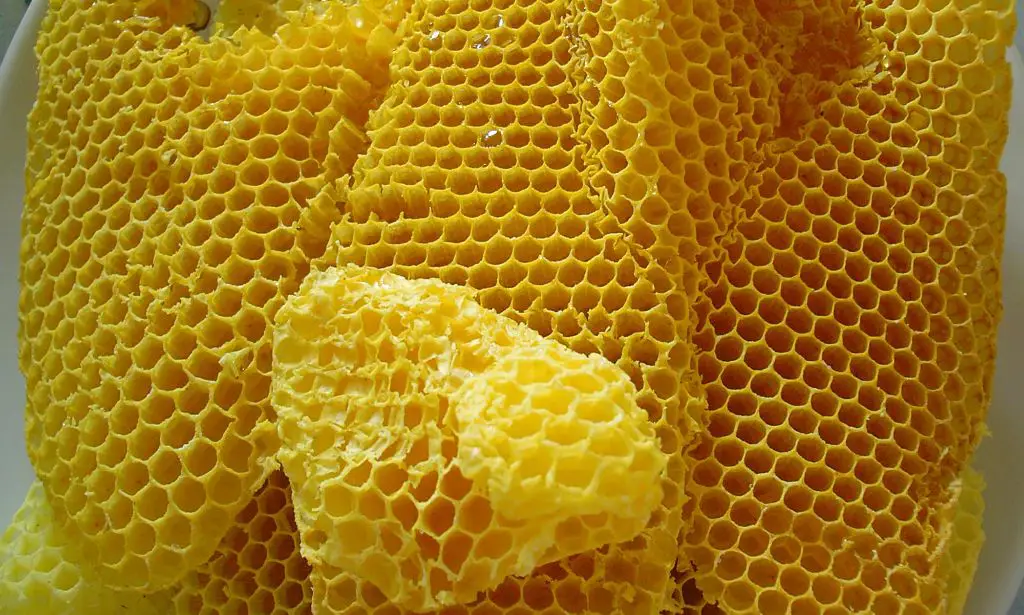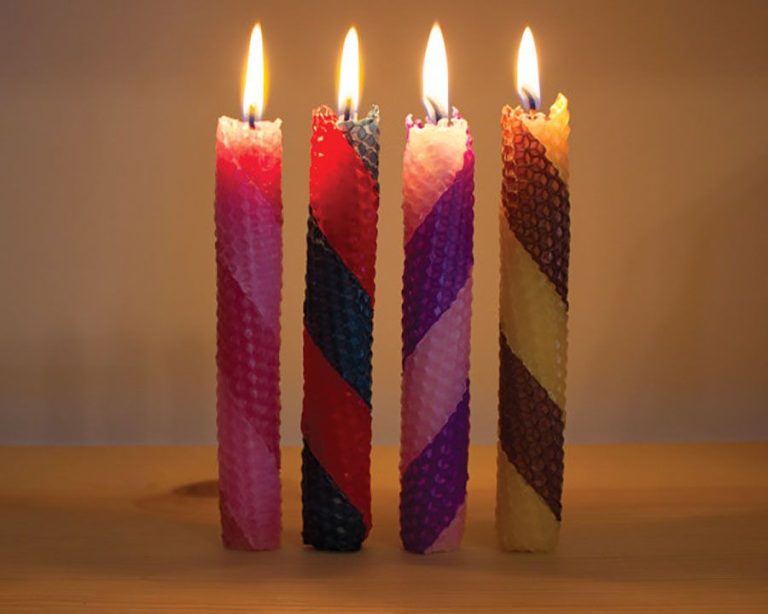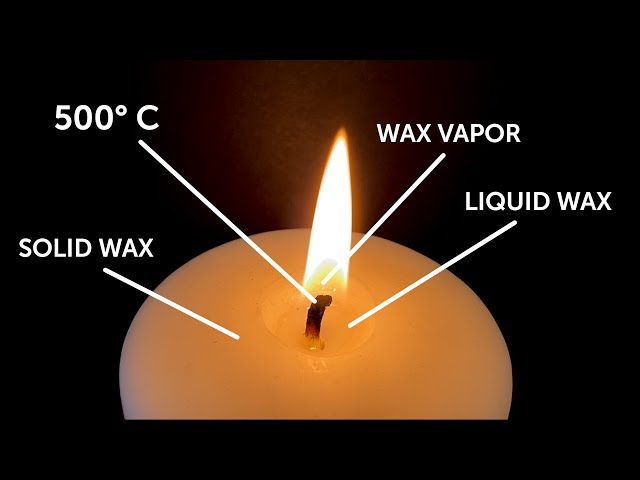Is Beeswax Or Soy Wax Better For Candle Making?
Both beeswax and soy wax are common natural wax options used for candle making. Beeswax is a wax produced by honey bees and has been used for centuries to make candles. Soy wax is a vegetable-based wax made from soybeans. It has become popular in recent years as a renewable and sustainable candle wax.
When deciding between using beeswax or soy wax for candle making, there are a number of factors to consider including cost, melting point, burn time, fragrance throw, and environmental impact. Both waxes have their advantages and disadvantages depending on the type of candle you want to make.
This article provides an in-depth comparison of beeswax and soy wax to help candle makers determine which option may be better suited for their needs.
Origins and Sources
Beeswax is a natural wax produced by honey bees. Beeswax is secreted from eight wax-producing glands on the worker bee’s abdomen. The bees use the wax to build the walls of the honeycomb where honey and pollen are stored. Bees must consume honey to secrete beeswax, with some estimates stating that 6-8 pounds of honey are consumed to produce 1 pound of wax. Beeswax is harvested by beekeepers when excess wax is built up in the hives. The wax can be collected by scraping off wax caps after honey extraction or by placing honeycombs in hot water or steam to melt the wax.

Soy wax is a vegetable wax made from hydrogenated soybean oil. Soybeans are harvested, cleaned, cracked, rolled into flakes, and then put through an extraction process with hexane or other solvents to separate the oil from soybean flakes. The soybean oil then goes through a hydrogenation process, which strengthens and hardens the oil into a wax. No bees are involved in the production of soy wax.
Sources:
https://www.flytinbottle.com/blog/soy-wax-vs-beeswax/
https://beeinspiredgoods.com/blogs/beekeeping/where-does-beeswax-come-from
Cost
There are notable price differences between beeswax and soy wax. Beeswax is significantly more expensive than soy wax. According to Jessica Welling Interiors, beeswax ranges from $11.22/lb for a small quantity, to $3.69/lb for 10 lbs. In comparison, soy wax ranges from $2-3 per pound. As outlined by Candles by Luma, beeswax is by far the most expensive candle wax on the market, while soy wax is much more affordable.
The high cost of beeswax is driven by several factors. Beeswax is a natural product made by honeybees, so there is a limited supply. It requires a significant amount of resources from bee colonies to produce beeswax. In contrast, soy wax is derived from soybeans, which are a heavily mass-produced global commodity crop. The abundance of soy helps keep soy wax prices low. Additionally, beeswax requires more processing and cleaning steps to prepare it for use in candles, also contributing to its higher price tag.
The dramatically lower cost of soy wax compared to beeswax makes it the budget friendly choice for candle making. However, some artisan candle makers and consumers are willing to pay a premium for 100% natural beeswax despite its higher price. But for most large-scale candle production, soy wax provides an affordable alternative while still being an eco-friendly option compared to paraffin wax.
Melting Points
Beeswax has a high melting point range of 144-149°F (62-65°C), while soy wax has a lower melting point range of 113-160°F (45-71°C) depending on the type of soy wax used [1]. The melting point affects how the wax performs in candles. Beeswax’s high melting point makes it suitable for pillar candles, as it stands up well to heat without bending or sagging. Soy wax’s lower melting point can make it prone to issues like frosting in pillar candles, so it may be better suited for containers and votives [2].
The melting point also impacts the wax pool temperature – the temperature at which the melted wax burns. Beeswax’s high melting point produces a hot wax pool around 150-170°F, while soy wax pools at a lower 120-135°F. A hotter wax pool means beeswax candles give off more fragrance throw. However, too hot a wax pool can lead to issues like tunneling [3].
Burn Time
When comparing the burn time of beeswax versus soy wax candles, beeswax candles tend to burn longer. According to sources, a 4oz beeswax candle will burn for around 20-25 hours, while a 16oz beeswax candle can burn for 80-100 hours (source). Soy wax candles have a shorter burn time in comparison. The exact burn time will depend on other factors like wick size and room temperature, but generally beeswax outperforms soy wax.
The longer burn time of beeswax candles can be attributed to the high melting point of beeswax. Beeswax has a melting point between 144-147°F, while soy wax is lower at 115-125°F (source). The higher melting point keeps the beeswax firmer and slower-burning as compared to soy wax. This results in beeswax candles lasting significantly longer before all the wax is used up.
When looking purely at burn time, beeswax is the better choice. Beeswax candles will stay lit and provide fragrance for more hours than soy wax. However, other factors like cost and sustainability may also affect the decision between the two waxes.
Fragrance
When it comes to a candle’s ability to hold and disperse fragrance, there are some key differences between beeswax and soy wax. Beeswax has natural honey notes that can interact with some fragrances, muting or altering their scents slightly. Soy wax, on the other hand, has very little scent of its own and acts as a neutral canvas for fragrance oils. According to research from CandleWic, “Soy wax holds onto scents well and releases them gradually as the candle burns, ensuring a consistent fragrance” (source). The porous nature of soy wax enables excellent fragrance retention and throw. Beeswax’s denser structure can restrict scent diffusion in some cases. While beeswax performs well overall, soy wax is often considered the best choice for showcasing strong fragrances with maximum hot and cold scent throw.
Appearance
Beeswax and soy wax have distinct visual differences that impact the look of finished candles. According to Wax Block Qualities: Pigment : Transparency : Lightfastness, beeswax has a honey-like transparent coloring and slight natural fragrance. The transparency allows dyes and pigments to be seen clearly in beeswax candles. Soy wax, on the other hand, has an opaque, creamy white appearance that covers up dyes and pigments. Soy wax candles tend to look more muted and matte compared to the sharper, vibrant colors in beeswax candles.
The opacity of soy wax also means the natural wax color shows through less than with translucent beeswax. Beeswax candles accentuate decor colors and materials, while soy wax provides a blank backdrop. The differing wax textures also impact appearance, with beeswax showing fine graininess when cooled and soy wax being smooth. Candle makers can produce a range of visual styles using each wax, from bold colors in beeswax to soft, creamy hues in soy.
Environmental Impact
When it comes to eco-friendliness, beeswax has some clear advantages over soy wax. Beeswax is a natural product made by honeybees, so it does not require extensive farming, pesticides, fertilizers or genetically modified crops like soy wax. The beeswax used in candles is typically collected as a byproduct of beekeeping operations focused on honey production, so no additional resources are expended solely for wax production [1].
On the other hand, soy wax is derived from soybeans which are heavily farmed on a large scale, often using pesticides and genetically modified seeds. Significant land and resources go towards growing soybeans solely for use in candle wax. Furthermore, soy wax involves more manufacturing processing compared to beeswax which is basically extracted and filtered from beehives [2].
When burned, beeswax candles emit very little soot whereas soy candles tend to produce more soot and smoke. Beeswax is also biodegradable and non-toxic if ingested by humans or animals. Overall, beeswax has a clear environmental advantage due to its organic origins and minimal resource use.
Availability
Beeswax can be more difficult to source than soy wax, especially for small-scale candle makers. Soy wax is readily available from major manufacturers and can be easily purchased online or from craft stores in small quantities. According to Soybeads, soy wax beads are convenient and fast melting. In contrast, beeswax may need to be sourced directly from beekeepers or apiaries, as indicated by search queries for purchasing beeswax locally.
Large beekeeping operations and companies like Ames Farm and Sacramento Honey Company sell beeswax in bulk, but accessibility is lower for small batch purchases compared to soy wax. The raw materials for soy wax can be mass produced, while beeswax relies on honeybee populations that require managed hives. This can make beeswax less consistently available than soy wax, especially for artisanal candle makers.
Conclusion
In reviewing the main differences between beeswax and soy wax for candle making, there are pros and cons to each that should be considered. Beeswax burns longer, holds fragrance better, and has a beautiful natural honey color. However, it is more expensive, can be harder to find, and has some environmental concerns around commercial beekeeping. Soy wax is affordable, readily available, and environmentally friendly, though it doesn’t burn quite as long or hold scent as well. It also lacks the golden hue of beeswax.
Overall, for most hobby or small-scale candle makers, soy wax may be the better choice. It’s easy to source, versatile to work with, and ecologically sustainable. Beeswax remains a premium option for those seeking maximum burn time, fragrance throw, and natural aesthetics. But for general use soy wax candles, especially container candles, provide an accessible and responsible alternative.
The decision ultimately comes down to personal priorities and candle making needs. Both beeswax and soy wax can produce quality candles in skilled hands. By understanding the differences, candle makers can choose the best wax for their specific goals and preferences.






